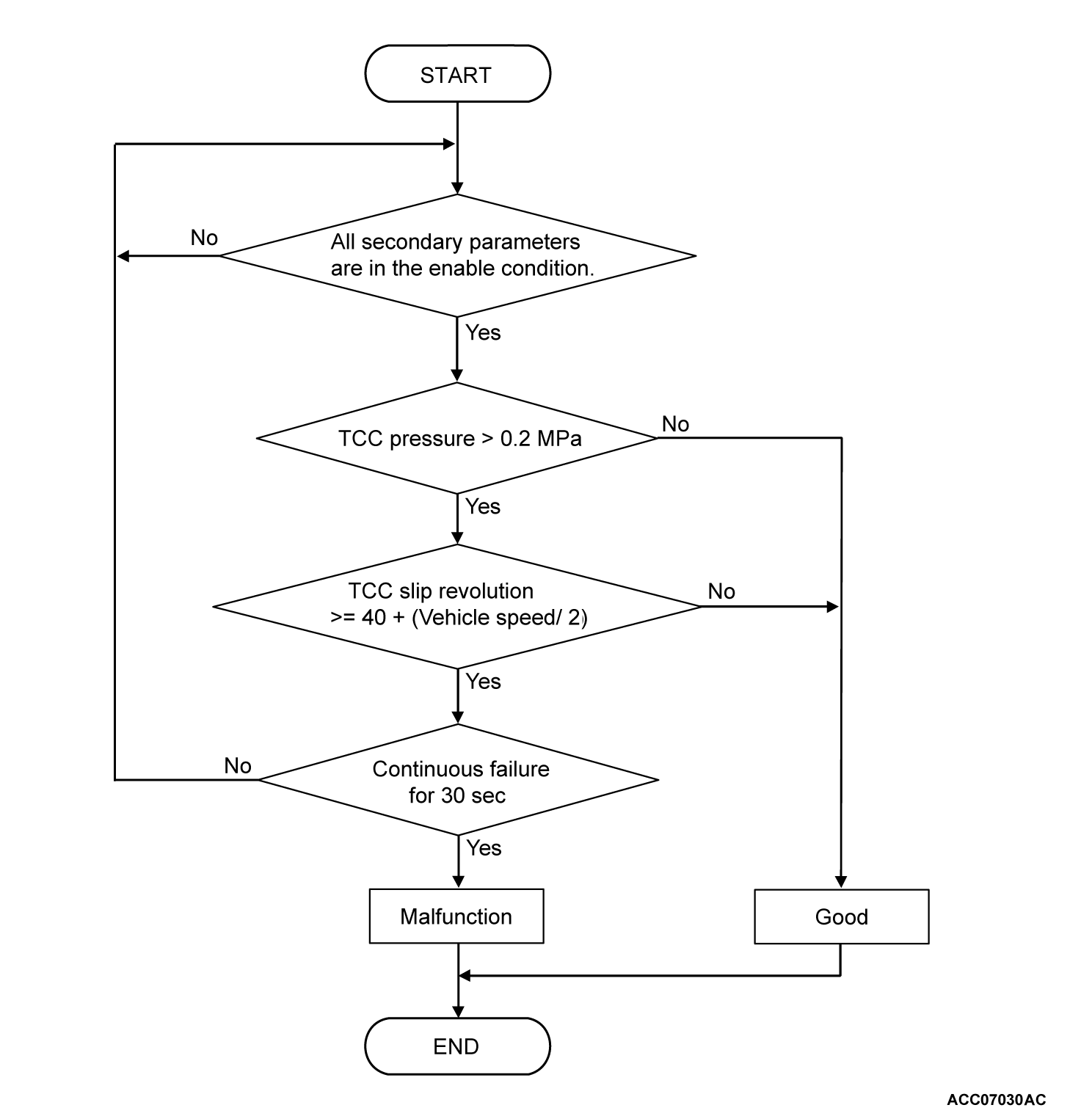DTC P0741: Abnormality in Lockup Function
DIAGNOSTIC FUNCTION
Abnormality is detected by the TCM when the torque converter slip speed is high during lockup control.
DESCRIPTIONS OF MONITOR METHODS
The status with the high torque converter slip speed continues for 30 seconds during lockup control [Primary pulley speed and engine speed are normal, and torque converter clutch (TCC) pressure is 0.2 MPa (29 psi) or more].
MONITOR EXECUTION
Continuous
MONITOR EXECUTION CONDITIONS (OTHER MONITOR AND SENSOR)
Other Monitor (There is no temporary DTC stored in memory for the item monitored below)
- P0715: Malfunction of primary pulley speed sensor
- U0001: Malfunction of CAN communication (Bus off)
- U0100: CAN time-out error (Engine)
Sensor (The sensor below is determined to be normal)
- Primary pulley speed sensor
DTC SET CONDITIONS
Check Conditions
- Voltage of battery: 10 volts or more
- Voltage of battery: 16.5 volts or less
- Torque converter clutch pressure: 0.2 MPa (29 psi) or more
Judgment Criteria
- Torque converter slip revolution: 40+ (vehicle speed/2) or more (30 seconds)
OBD-II DRIVE CYCLE PATTERN
The vehicle is driven for at least 50 seconds at the speed of 40 km/h (24.9 mph) or more.
PROBABLE CAUSES
Malfunction of the transaxle assembly (Faulty lockup solenoid valve or valve body assembly)
DIAGNOSIS
Required Special Tools:
- MB992744: Vehicle communication interface-Lite (V.C.I.-Lite)
- MB992745: V.C.I.-Lite main harness A
- MB992747: V.C.I.-Lite USB cable short
- MB992748: V.C.I.-Lite USB cable long
- MB991958: Scan Tool (M.U.T.-III Sub Assembly)
- MB991824: Vehicles Communication Interface (V.C.I.)
- MB991827: M.U.T.-III USB Cable
- MB991910: M.U.T.-III Main Harness A (Vehicles with CAN communication system)
STEP 1. Check the following connector.
- CVT assembly connector
Check the terminals for a contact status problem and internal short circuit.
Is the check result normal?
 Repair the faulty connector.
Repair the faulty connector.STEP 2. Measure the output wave pattern of the lockup solenoid valve at TCM connector (LULS terminal).
(1) Connect the CVT assembly connector.
(3) Driving conditions.
(4) During the lockup control.
(5) Use an oscilloscope, measure the voltage between TCM connector LULS terminal and body ground.
Is the check result normal?
STEP 3. Using scan tool (M.U.T.-III), recheck the DTC.
Check again if the DTC is stored.
(1) Erase the DTC.
(2) Turn the ignition switch to the "LOCK" (OFF) position.
(3) Carry out a test drive with the OBD-II drive cycle pattern.
(4) Recheck the DTC.
Is DTC P0741 stored?
![[Previous]](../../../buttons/fprev.png)
![[Next]](../../../buttons/fnext.png)


